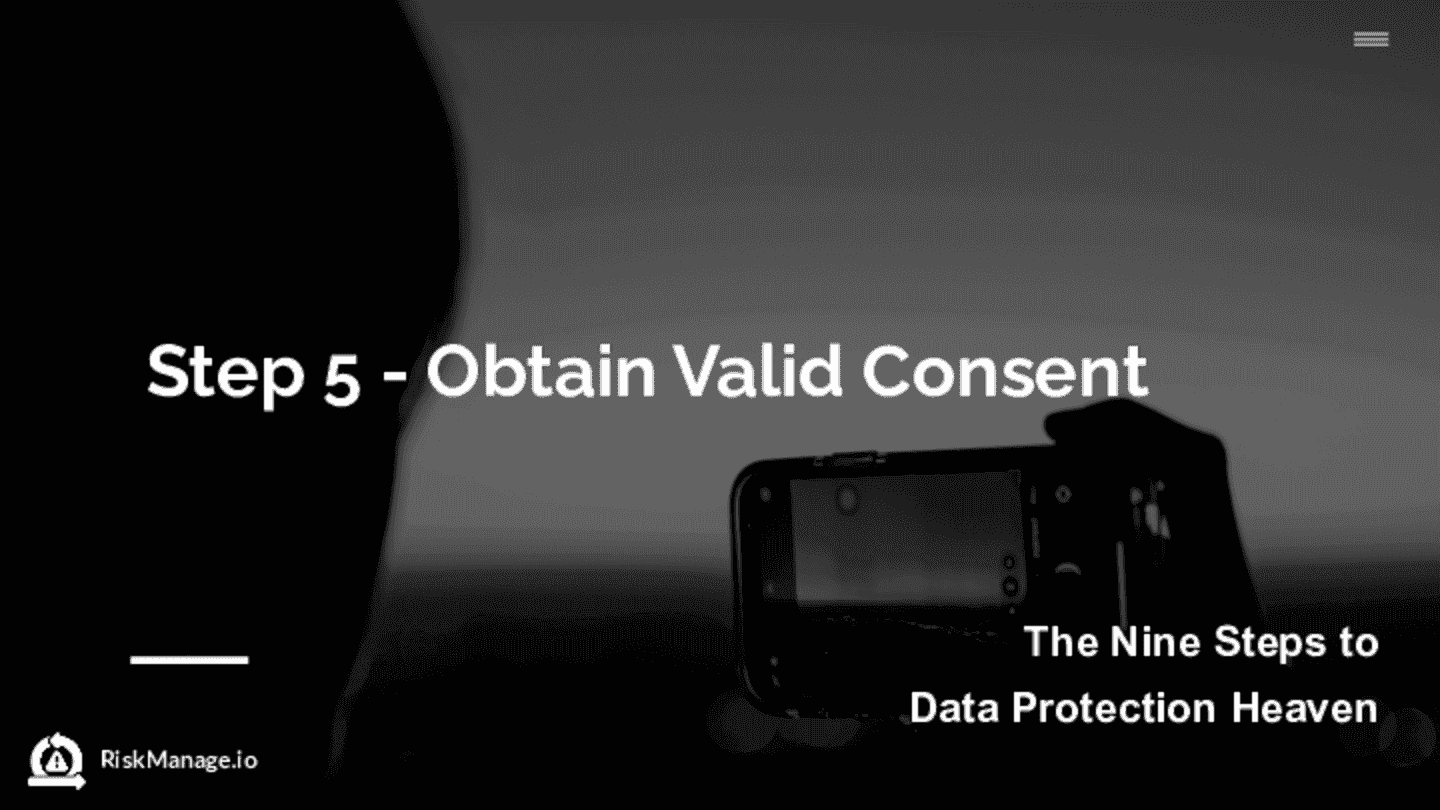The 9 Steps to DPA Heaven : Step 5 - Ensure You Have Valid Consent for Processing
A roadmap to effectively safeguard personal data, ensure regulatory compliance, and build lasting trust with stakeholders.
Welcome to Step 5 of The Nine Steps to Data Protection Heaven article. Previously we have covered 1. Implementing a data protection policy, 2. Carrying out a data protection impact assessment, 3. Appointing a Data Protection Officer, 4. Making sure our staff understand their obligations.
In Step 5, we will cover Consent, and what you need to ensure you do if you are collecting or processing personal data.
Links
- You can listen to this Step 5 as a podcast here, or
- the complete audio (parts1-9) here.
- The complete article is available here.
- If you have missed any part or would like to start from the beginning, you can find links to all sections at the bottom of this article.
A roadmap to effectively safeguard personal data, ensure regulatory compliance, and build lasting trust with stakeholders.
Here is a summary of the 9-Step process, that you can follow as we walk through each step.
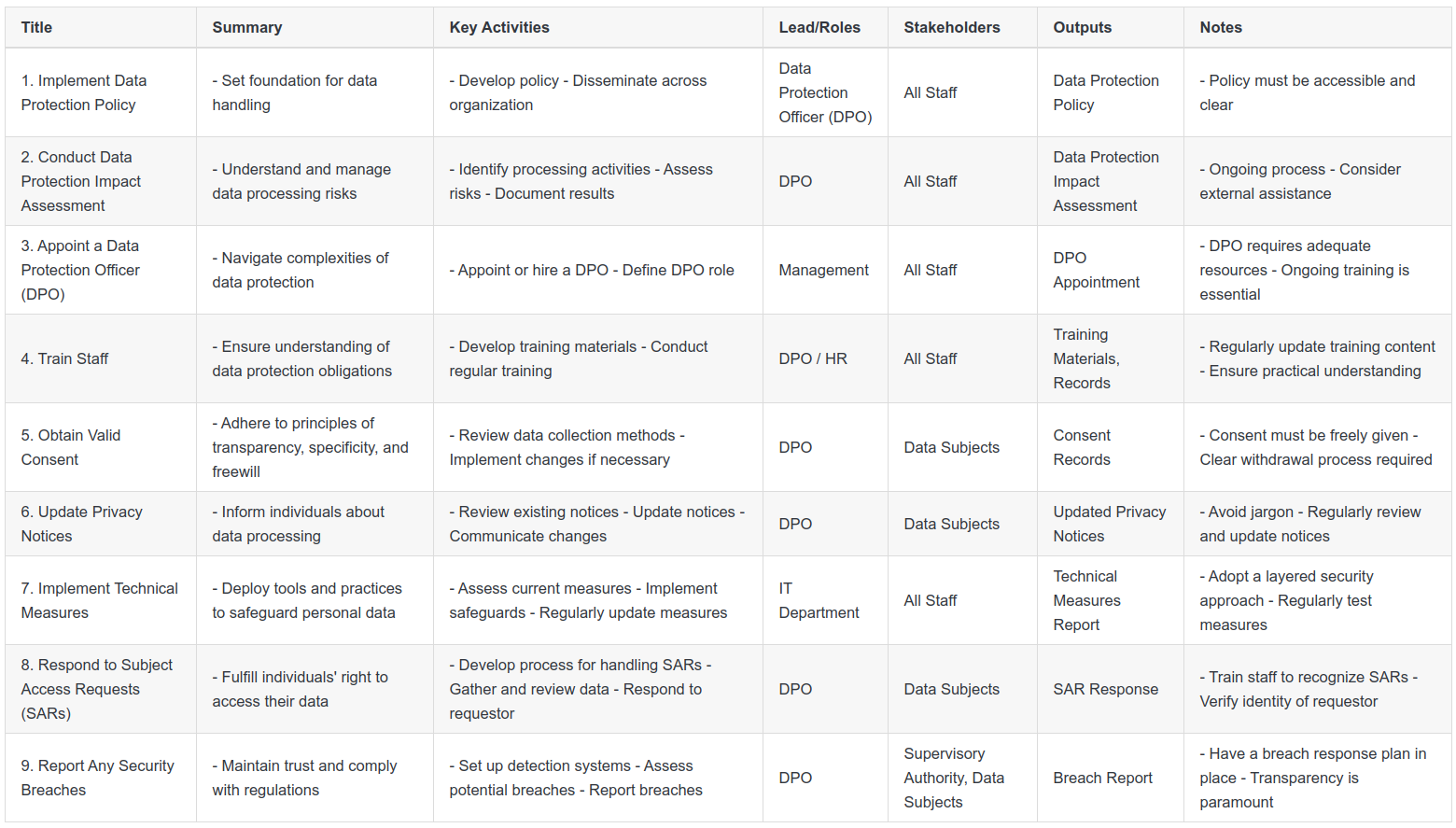
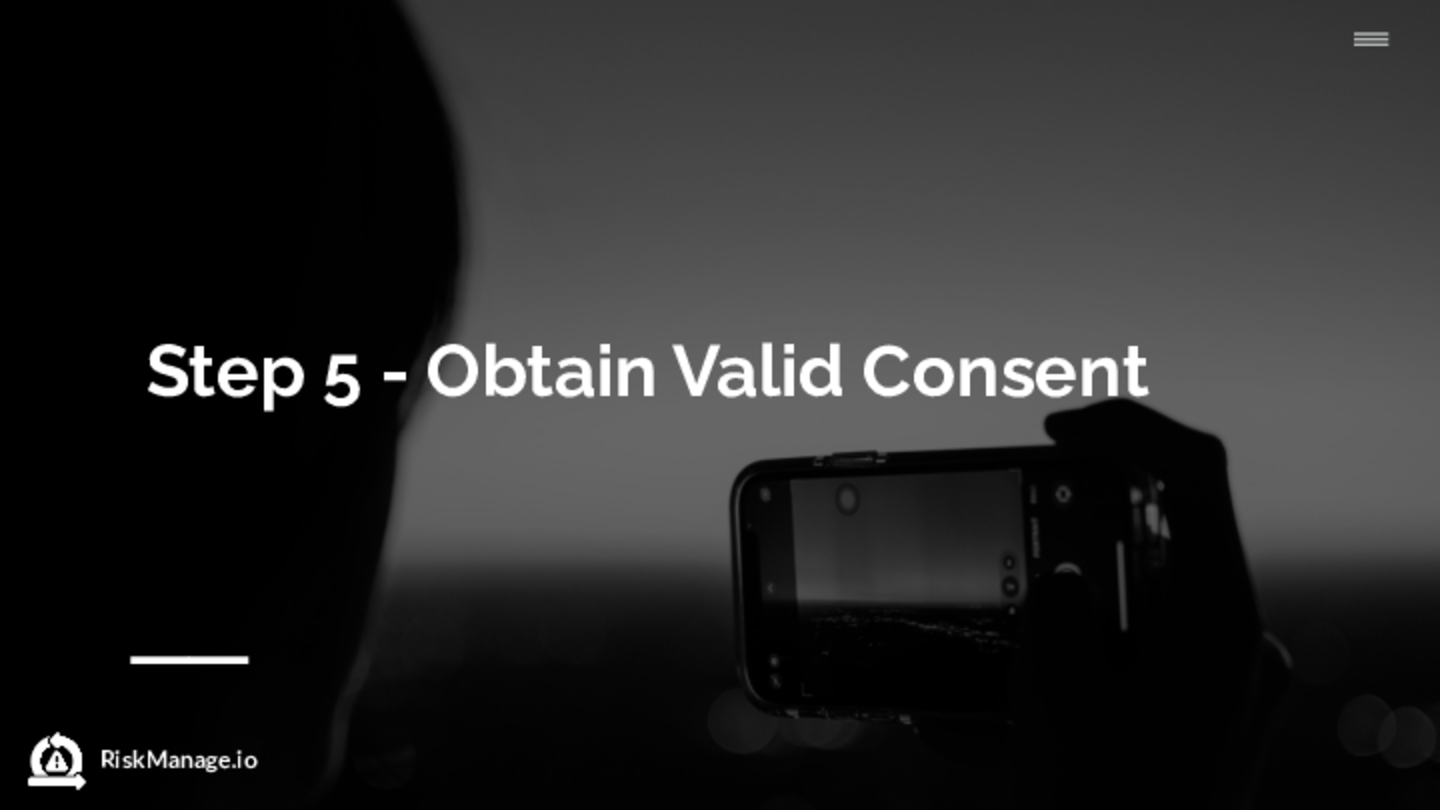
Step 5: Ensure You Have Valid Consent for Processing
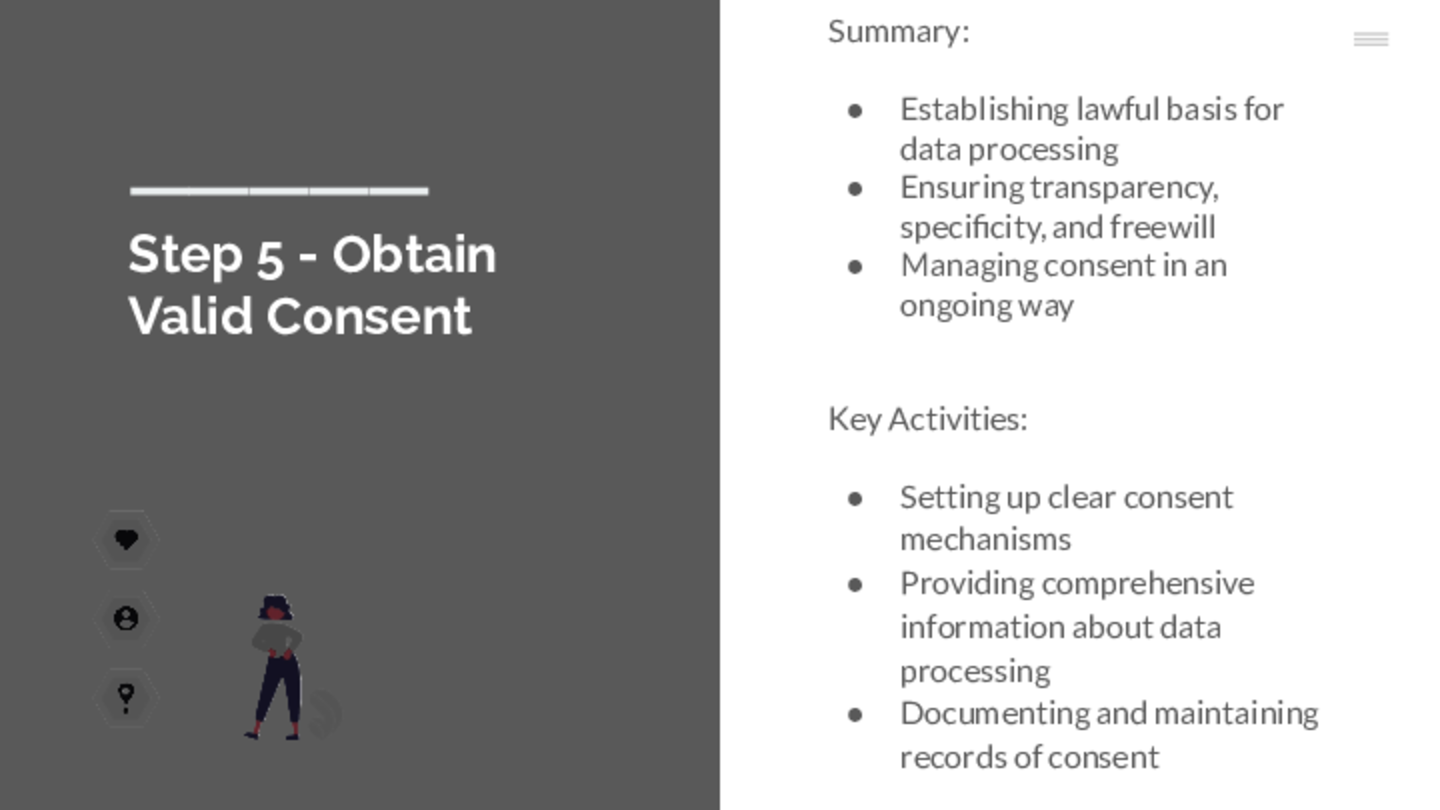
One of the fundamental principles of data protection is the requirement of consent. If you intend to collect or process personal data, you must have clear and valid consent from the individual. This consent must be informed, freely given, specific, and unambiguous.
Key Activities
The first step in ensuring valid consent is to clearly define what data you are collecting, why you are collecting it, how you plan to use it, and who will have access to it. This information should be clearly communicated to the individual before they give their consent.
Next, design consent forms or mechanisms that are easy to understand and use. The language used should be clear and simple, and it should be just as easy for an individual to withdraw their consent as it is to give it.
Furthermore, ensure that you have systems in place to keep clear records of consent. This includes when and how the consent was obtained and any subsequent changes or withdrawals of consent.
Lastly, regularly review and refresh consent as necessary. This is especially important if there's a change in the way you process data, or at regular intervals to ensure the continued engagement of the individual.
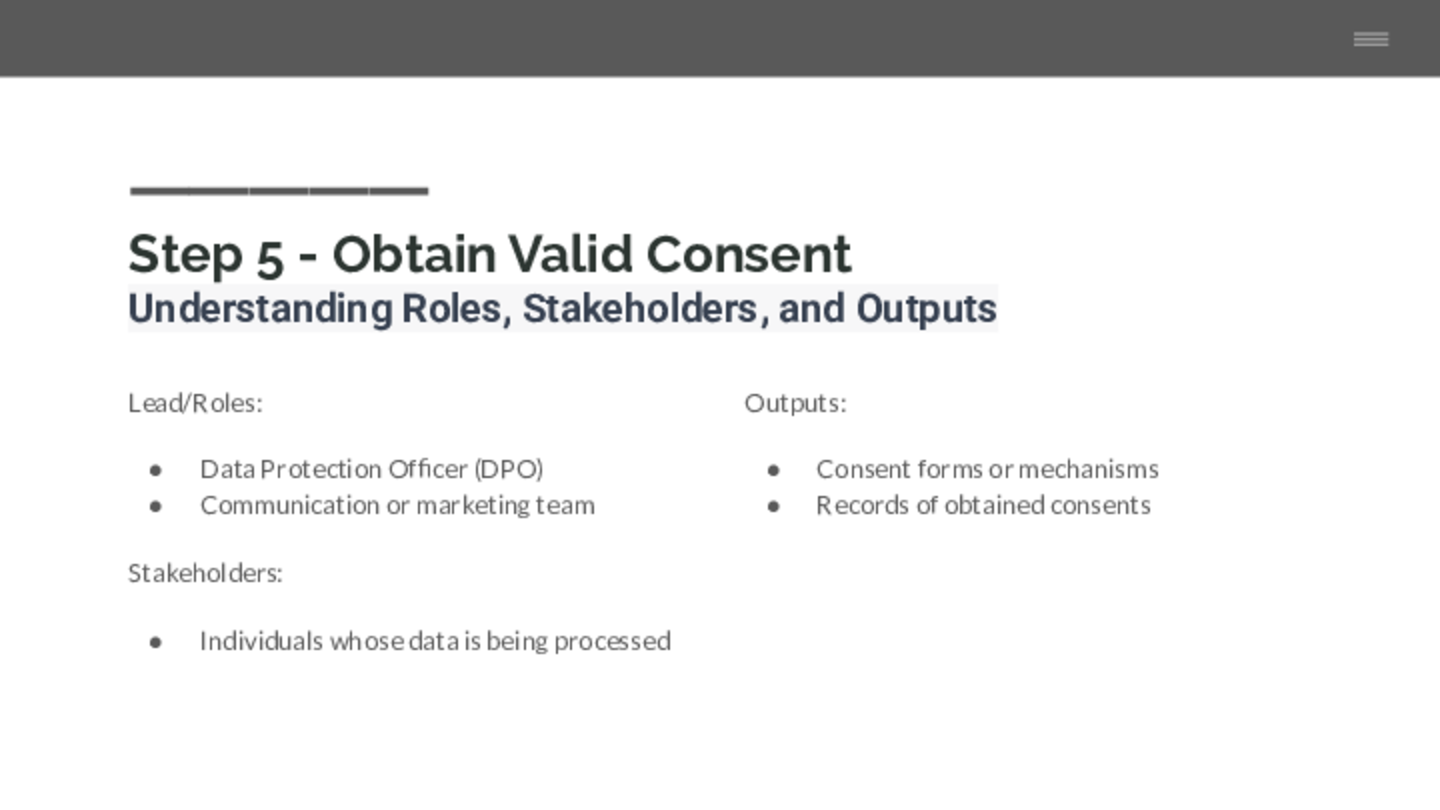 Key Roles and Stakeholder Engagement
Key Roles and Stakeholder Engagement
Key roles in this process include the DPO or data protection leads who design the consent processes and maintain records, and frontline staff who often handle the direct collection of consent from individuals. Stakeholders include the individuals from whom consent is being sought.
Outputs
The primary output from this step is a record of consent for all processed personal data. This includes documentation of who gave consent, what they were told, how they gave consent, and when. The secondary output is an easy-to-use and understandable consent mechanism (like a consent form or checkbox).
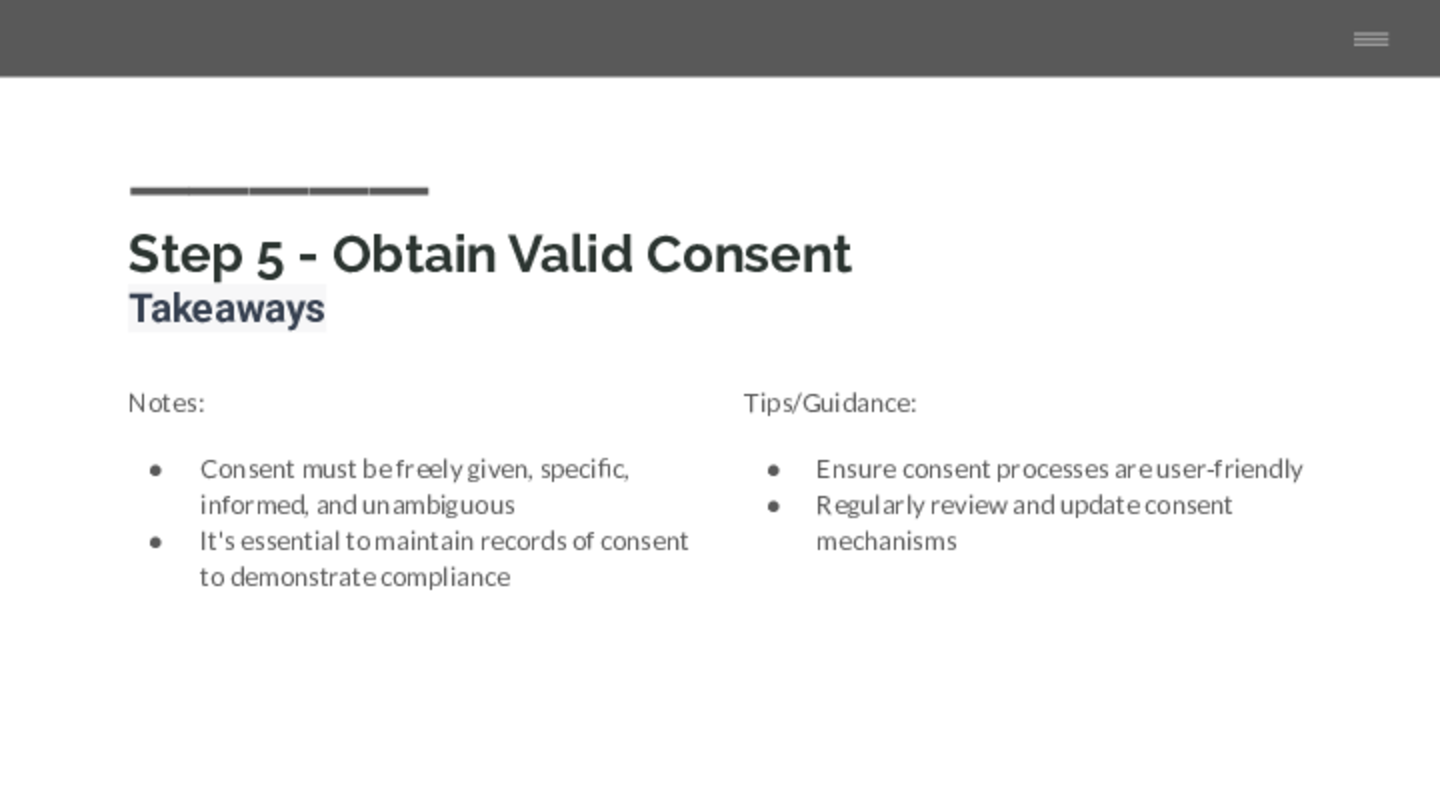 Summary
Summary
One best practice is to make consent an active process. Don't rely on pre-ticked boxes or inactivity as a sign of consent ? the individual should make a clear action to give their consent.
Additionally, always be transparent about your data practices. If an individual fully understands what they're consenting to, they're more likely to trust your organisation with their data.
A useful tip is to ensure that withdrawing consent is as easy as giving it. If an individual decides they no longer want their data processed, respect their decision and have a clear process for handling this.
Finally, remember that consent is only one of the legal bases for processing personal data, and in some cases, it might not be the most appropriate one. Always consider the nature of your data processing activities and the rights and freedoms of the individual when determining your legal basis.
In conclusion, ensuring valid consent is not just about compliance with data protection laws; it's also a matter of respect for individuals' rights and building trust with them. By making consent a priority, you can demonstrate your commitment to responsible data handling and enhance your reputation as a trusted organisation.
In the next section, Step 6 , we will look at Privacy Notices, and how to update them to ensure they provide the guidance and information needed.
Navigation
- The next part, "Step 6: Update Privacy Notices" is available here.
- Step 6 Audio podcast available here
- Links to the complete list of audio podcasts for this series are available here: Part 1, Part 2, Part 3, Part 4, Part 5, Part 6, Part 7, Part 8, Part 9, Parts1-9/Complete
- Links to each Section: Step 1, Step 2, Step 3, Step 4, Step 5, Step 6, Step 7, Step 8. Step 9.
If you like this content, find it useful or are looking for further assistance, you can contact us via info@riskmanage.io, webchat or via our website using the links provide.
